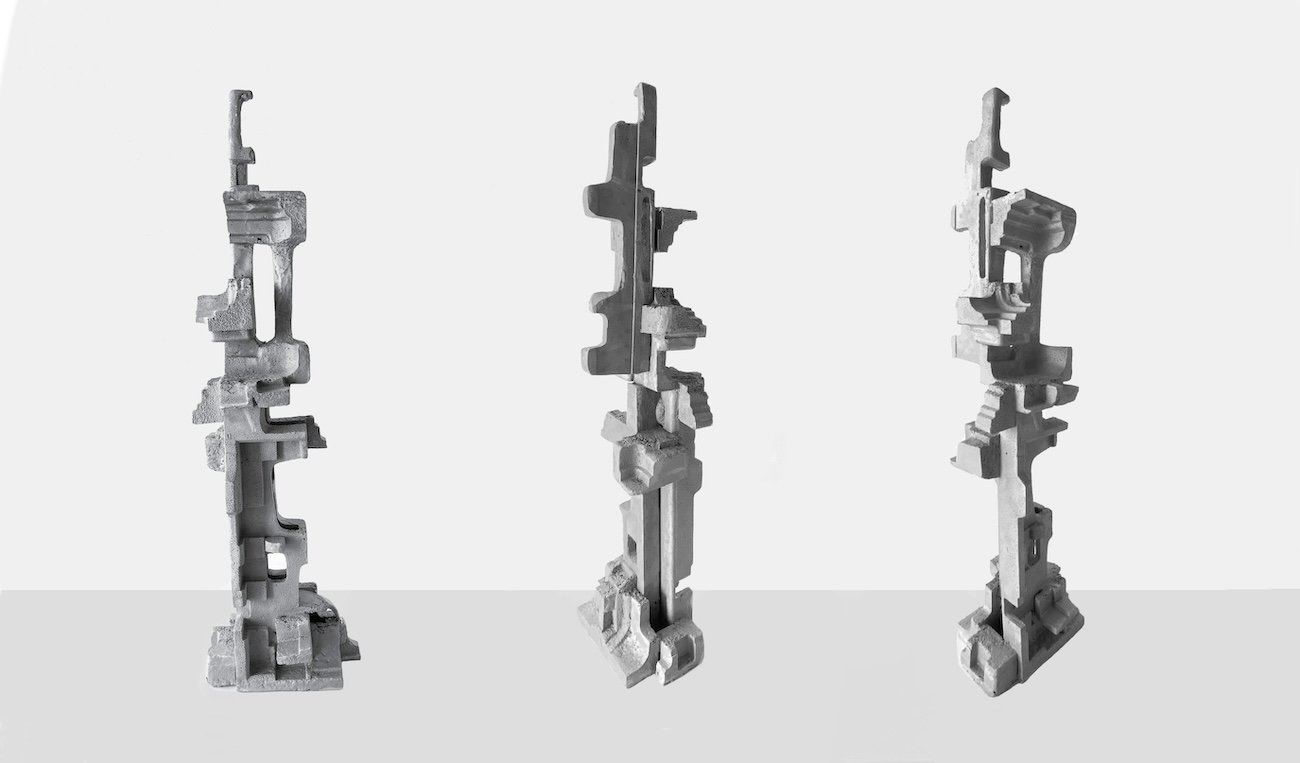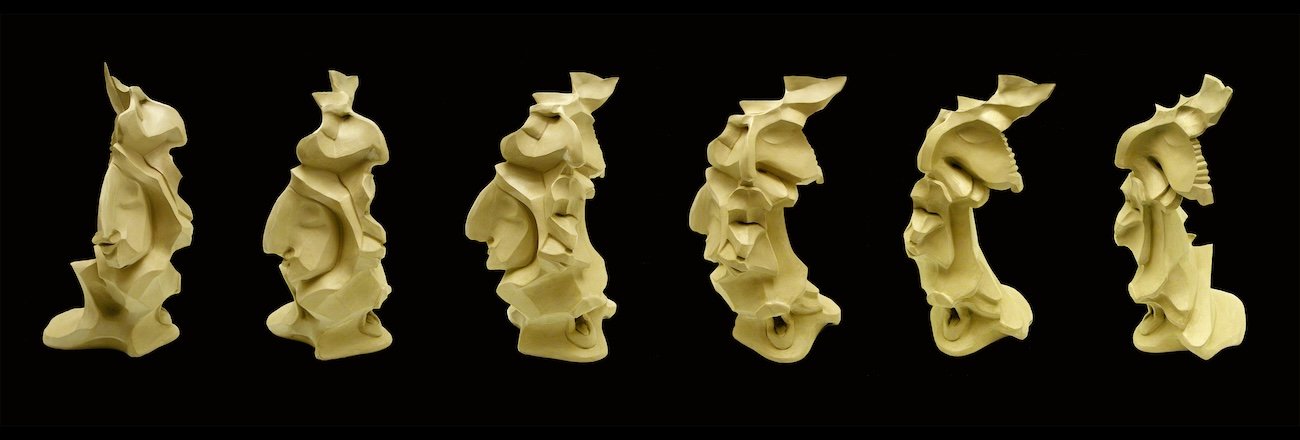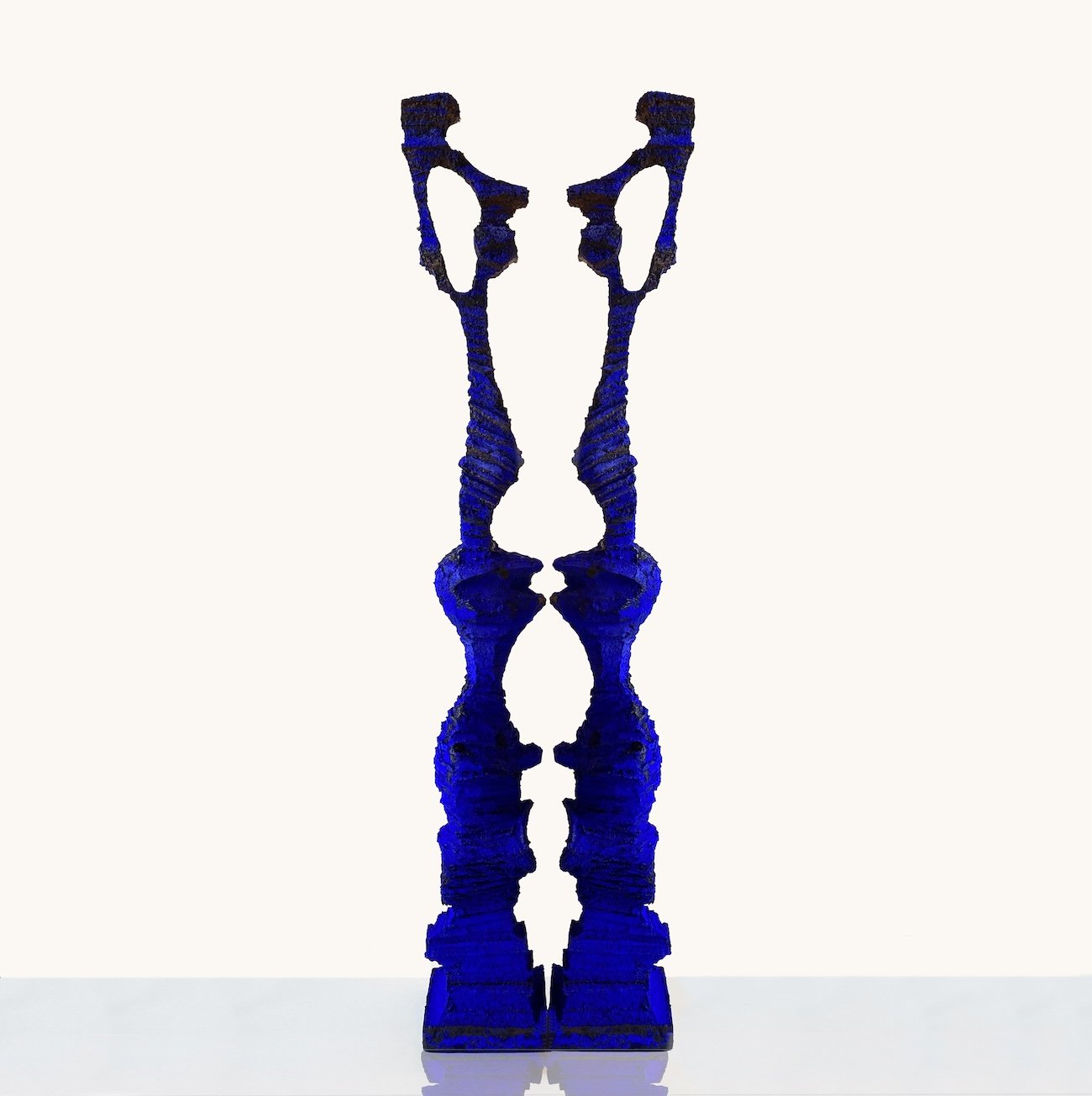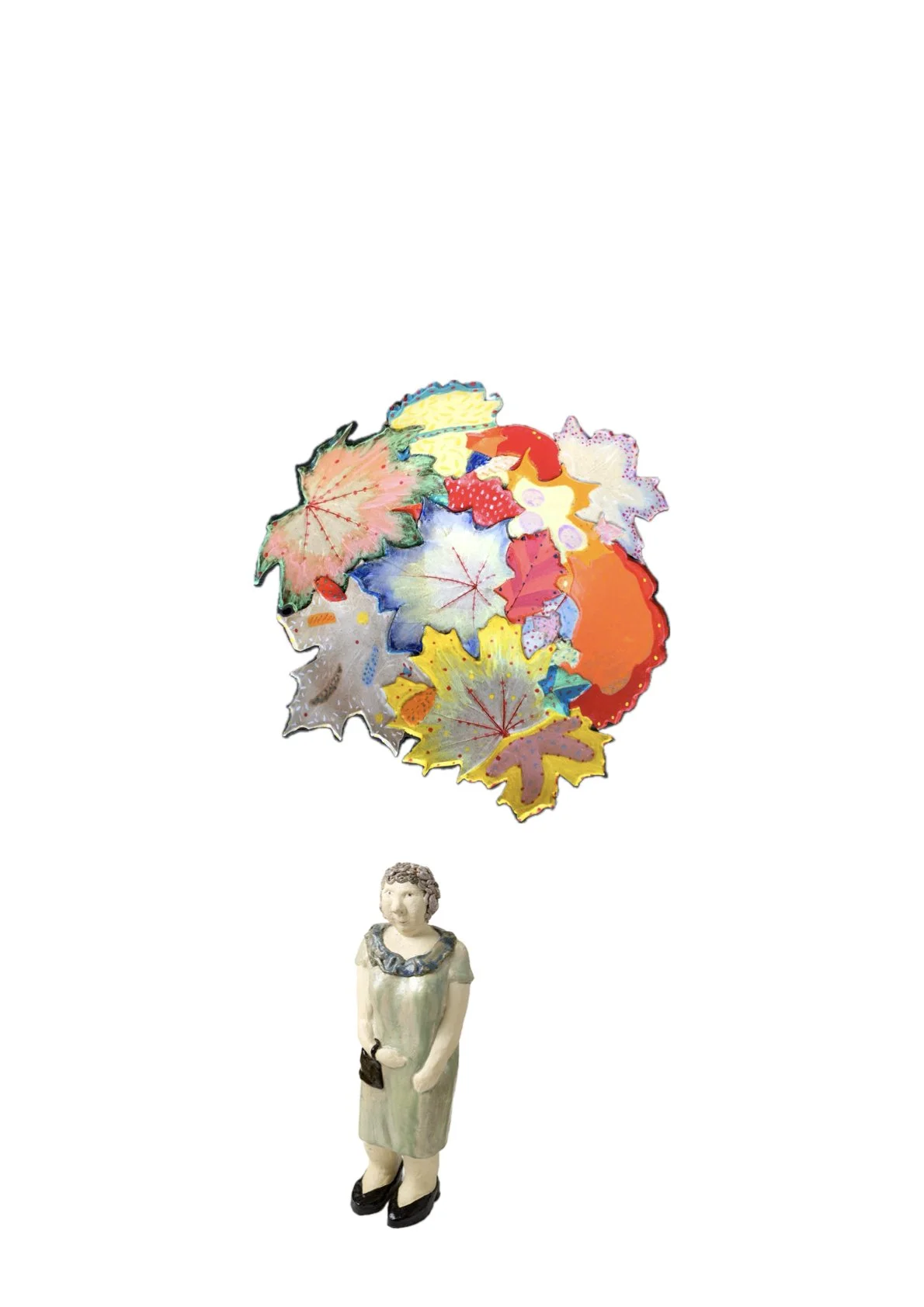Gerhard Petzl
Gerhard Petzl
In the ever-evolving narrative of sculpture, Gerhard Petzl emerges as a contemporary sculptor whose work commands a unique presence in the dialogue with the old masters. His oeuvre, a confluence of abstract forms and material experimentation, shares an undercurrent with the explorations of the greats, yet speaks with a distinct voice that resonates with today’s aesthetic inquiries.
Petzl's "Composition XXI" and "Composition XX" pieces, rendered in aluminium, echo the industrial-age embrace of new materials and methods. They evoke the constructivist sculptures of Naum Gabo and Antoine Pevsner, pushing the boundaries of abstraction and form. The skeletal structures, with their angular and interlocking segments, conjure a sense of architectural blueprints brought to life, offering a study in balance and tension reminiscent of the poise found in Alberto Giacometti's "Walking Man" series.
In contrast, "The mirrored middleman has one above, one below and one in front of him," sculpted in bronze, shares a kinship with the expressionist vigor of Wilhelm Lehmbruck's distorted figures. Petzl’s piece presents a narrative of multiplicity and reflection, compelling the viewer to consider the perspectives of self in a manner that might make Rodin nod in contemplative solidarity.
The "Giant ants" installation, also in bronze, is a testament to Petzl's ability to infuse dynamic energy into static forms. It’s a concept that conjures up associations with Louise Bourgeois's "Maman," both artists exploring the psychological underpinnings of the natural world transformed through their vision. Petzl’s ants, with their gilded exoskeletons and sprawling limbs, bring a surreal magnification to the ordinarily minute, creating a visual impact that speaks to both the fragility and the monumentality of life.
"Composition III," a bronze work, bears the rough-hewn texture and fragmented form that speaks to the cubist deconstructions. There is an echo of Picasso's "Head of a Woman," not in shape but in spirit—the embrace of multiple viewpoints and the representation of three-dimensional space on a two-dimensional plane transferred into the realm of sculpture.
"New ceystal plant form" is a vibrant burst of color and organic chaos. It’s a piece that might remind one of the flamboyant excesses of Baroque art, yet its materiality and form are decidedly modern.
Petzl's sculptures are cerebral yet visceral, combining intellectual rigor with sensory impact. They carry the weight of art history, but they are not burdened by it. Instead, they leverage the past to launch into a conversation about the present, and indeed the future. His sculptures do not merely stand in silent homage but engage in a vibrant dialogue with these historical figures, questioning and extending their legacies.
Take, for instance, the stoic poise of "Composition XXI,” which stands as a series of interconnected puzzles, a hallmark of Petzl’s fascination with the interplay between individual components and the collective whole. This piece, in its metallic austerity, could be seen as a descendant of Constantin Brancusi's "Endless Column," stretching towards the infinite, yet firmly rooted in the concrete reality of modern materials and techniques.
When considering the "Giant ants," it recall the Dadaists and Surrealists, who prized the uncanny and the marvelous. Petzl's ants, frozen in mid-march, transform the gallery space into a landscape of wonder, much as Salvador Dalí's "Lobster Telephone" once challenged the domestic mundanity with the shock of the unexpected.
The "New crystal plant form" is perhaps the most vivid in its dialogue with the past. Here, the organic merges with the fantastical, creating forms that seem almost coral-like in their intricacy. This work could be a distant relative of the Rococo's organic forms, such as those found in the works of Franz Xaver Messerschmidt, but it's also deeply imbued with the spirit of contemporary sculpture, which finds poetry in the intersection of nature and artificiality.
His sculptures challenge, provoke, and inspire, much like the avant-garde movements of the early 20th century did in their time. His bold use of color, the choice of scale, and the integration of space are all hallmarks of a sculptor who is not content to simply create forms but is intent on crafting experiences.
These experiences are grounded in the materiality of the sculptures. The choice of bronze, aluminium, and the vibrant hues are not arbitrary. They serve as a testament to Petzl's commitment to exploring the limits of form and the possibilities of perception. The rough textures, the stark geometries, and the explosive colors are all components of a visual language that Petzl is continuously developing.
Gerhard Petzl’s sculptures stand at the intersection of history and modernity. His work is a testament to the power of sculpture to evolve, to absorb the lessons of the past while boldly forging its own path.
Like the old masters, Petzl understands the primacy of form, but he also recognizes the infinite possibilities inherent in modern materials and contemporary themes. His sculptures are not just objects to be viewed; they are participants in a broader cultural discourse, bridging the gap between what sculpture has been and what it can become.
The dialogue Petzl engages in is not a quiet conversation; it is a resounding exchange that reverberates through the halls of art history. Each piece, with its own distinct voice, contributes to a chorus that speaks of innovation, reflection, and the enduring quest for understanding through art.
While his works are deeply rooted in the tradition of sculpture as a medium of solidity and permanence, Petzl also seems to suggest that sculpture, like all art forms, is fluid. It is capable of change, growth, and adaptation. In this sense, his works are less statues than they are moments of transition, capturing the essence of sculpture as it stretches towards new horizons.
Petzl's sculptures are thus not only a reflection of his own artistic journey but also a map of sculpture's potential trajectory. They stand as a testament to the enduring relevance of the medium, and to the ability of artists to continue to reimagine and reinvent it. His works invite us to look again, to reconsider our preconceptions, and to see the lineage of sculpture not as a series of closed chapters but as an open book, with pages still being written.
Gerhard Petzl's sculptures stand as a testament to the enduring power of form and material in conveying artistic vision. His work is an exploration of balance, texture, and the interplay between light and shadow, meticulously crafted from materials like bronze and aluminum which he manipulates with both reverence and innovation. Petzl's approach to sculpture is both architectural and organic, creating pieces that resonate with the complexity of natural forms while retaining a distinctly modern aesthetic.
Each piece, whether it echoes the intricate structure of a crystal plant or the anthropomorphic contours of "Composition III," showcases Petzl's ability to harmonize the rigidity of metal with the fluidity of natural shapes. His work is not only a display of technical prowess but also an invitation to ponder the relationship between the man-made and the organic, the past and the present. In essence, Petzl's sculptures are more than objects of visual delight; they are three-dimensional narratives that speak to the transformative nature of art, reminding us that beauty often resides in the mastery of crafting and the boldness of imagination.
Composition XXI, material - Aluminium
New ceystal plant form, material-bronze
5in1 head composition, material-clay
Female swan in nest, material-bronze, wood, strings
Giant ants, Material-bronze
Composition III, material-bronze
Tongue, material-bronze
Composition XX, material Aluminium
The mirrored middleman has one above, one below and one in front of him, (material-bronze).
Iceman, matzerial-bronze, Acrylic













